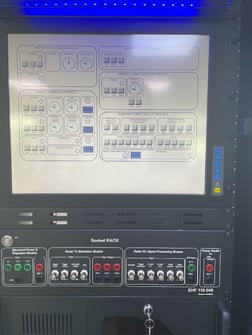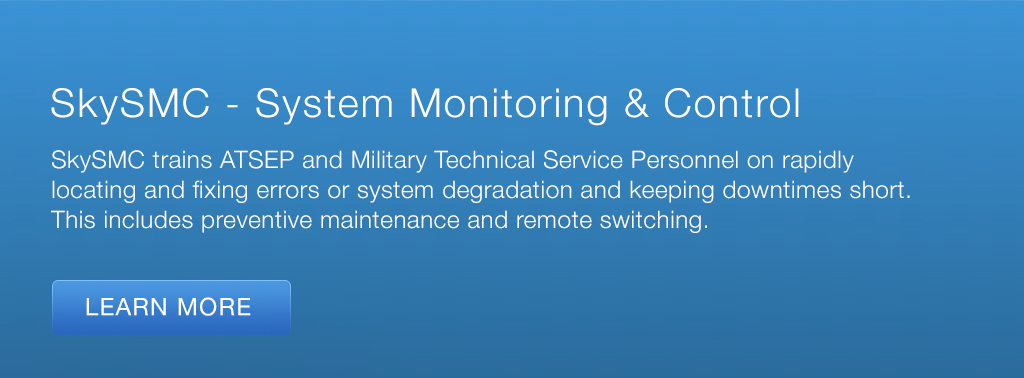Air Traffic Control (ATC) is one of the most critical components of aviation, ensuring the safe and efficient flow of air traffic. With the increase in air traffic, there is a greater need for reliable communication and surveillance systems to ensure safe and efficient operations.
However, transmission errors due to channel alignment in ATC systems can significantly impact the effectiveness of these systems, leading to aviation incidents. In this article, we will explore the impact of receiver errors due to channel alignment on ATC services, reported aviation incidents, steps to be taken by ATSEP for rectification and prevention of receiver errors, factors responsible for these errors, common types of receiver errors, and how to prevent them.
Receiver Errors Due to Channel Alignment:
Receiver errors due to channel alignment refer to a type of transmission error in which the frequencies used for transmitting and receiving signals are not aligned, leading to degradation of the received signal. This can happen due to a variety of reasons such as incorrect tuning of the receiver, electromagnetic interference, or hardware malfunctions.
Impact of Channel Alignment Related Receiver Errors:
The impact of channel alignment related receiver errors can be significant, leading to degraded ATC services and increased risk of aviation incidents. These errors can result in reduced communication range, loss of signal quality, and in extreme cases, complete loss of communication between the aircraft and ATC. This can lead to confusion among pilots, misinterpretation of instructions, and ultimately, unsafe flying conditions.
To prevent these errors, regular maintenance of equipment, monitoring of the system for any signs of electromagnetic interference or hardware malfunctions, regular tests to ensure frequency alignment, and providing training to ATC personnel can be useful. However, even with these measures in place, there is always a risk of receiver errors due to channel alignment. As such, it is critical to remain vigilant and take prompt action to rectify any issues that may arise.
Scenarios that illustrate the impact of receiver errors related to channel alignment on air traffic control services
Scenario 1
Crosstalk Interference
In a busy air traffic control center, air traffic controllers rely on clear and accurate communication with pilots to ensure the safe and efficient movement of aircraft. The center recently upgraded its communication system to accommodate higher bandwidth and increased traffic.
However, during the implementation of the new system, a receiver error related to channel alignment occurs, causing crosstalk interference between adjacent communication channels. As a result:
Scenario
Air traffic controllers transmit instructions to pilots on one channel, but due to the receiver error, the signals bleed over to the adjacent channel, interfering with ongoing communications between other controllers and pilots.
Impact
The crosstalk interference leads to distorted or garbled messages received by pilots and controllers on the affected channel. Miscommunication and confusion arise as pilots receive overlapping instructions from multiple controllers. This can result in delayed or incorrect responses, potentially compromising the safe operation of aircraft and increasing the risk of incidents.
Consequence
The compromised communication caused by the receiver error and channel misalignment can lead to misinterpretation of instructions, delayed responses, and decreased situational awareness among pilots and air traffic controllers. The overall efficiency and safety of air traffic control services are negatively affected.
Scenario 2
Intermittent Communication Loss
In another air traffic control center, a new communication system with increased bandwidth has been deployed to support the growing demand for data exchange. However, a receiver error related to channel alignment leads to intermittent communication loss:
Scenario
Air traffic controllers and pilots engage in critical communications, but due to the receiver error, the alignment between the transmitter and receiver channels is disrupted. This disruption causes intermittent loss of communication between controllers and pilots.
Impact
Communication gaps occur at unpredictable intervals, resulting in momentary breaks in communication. During these periods, pilots may be unable to receive important instructions or updates from air traffic controllers, leading to potential confusion and compromised flight operations.
Consequence
The intermittent loss of communication due to receiver errors and channel misalignment poses a significant risk to aviation safety. Air traffic controllers may experience difficulties in providing timely guidance or instructions to pilots, potentially impacting situational awareness, decision-making, and the overall coordination of air traffic.
In both scenarios the impact of receiver errors related to channel alignment on air traffic control services highlights the criticality of reliable communication in aviation. These errors can disrupt communication, introduce miscommunication, and compromise the efficiency and safety of air traffic management. It underscores the importance of maintaining precise channel alignment and robust receiver systems to mitigate the risk of incidents in aviation.
Steps to be Taken by ATSEP for Rectification of Receiver Errors Related to Channel Alignment:
When an Air Traffic Safety Electronics Personnel (ATSEP) encounters receiver errors related to channel alignment, the following steps can be taken to rectify the issue
Identify the symptoms
Determine the specific symptoms or indications that suggest receiver errors related to channel alignment. This could include issues such as poor signal quality, distorted or intermittent communication, incorrect frequency or channel selection, or any other abnormalities affecting the receiver's performance.
Verify system documentation
Refer to the receiver's documentation, including manuals, specifications, and configuration guides. Understand the expected channel alignment requirements and parameters for the specific receiver.
Check receiver settings
Review the receiver's settings and configuration to ensure they are correctly aligned with the intended channel. Verify that the receiver is programmed to receive the appropriate frequency, channel bandwidth, and modulation scheme. Confirm that any channel filters or demodulation settings are properly configured.
Verify signal source
Ensure that the signal source or transmitter is operating on the correct channel and frequency. Confirm that the channel and frequency of the transmitter match the receiver's expected channel alignment. Consult with responsible personnel or experts who are responsible for the signal source if necessary.
Perform signal analysis
Use diagnostic tools and techniques to analyze the received signals. This can involve spectrum analyzers, signal analyzers, or built-in diagnostic features of the receiver. Collect relevant data on signal quality, frequency spectrum, power levels, or modulation characteristics.
Cross-check with reference sources
Compare the received signals with reference sources or known standards. This can include comparing the received signal characteristics with expected signal profiles, reference signal generators, or other reliable sources of the intended signals. Identify any discrepancies in frequency, modulation, or other parameters.
Troubleshoot and isolate
Based on the analysis and comparison results, identify potential causes of channel misalignment. This could include issues with antenna alignment, signal interference, improper cabling or connectors, or other components of the receiver system. Troubleshoot each potential cause systematically to identify and isolate the root cause.
Rectify the issue
Once the root cause is identified, take appropriate actions to rectify the channel alignment problem. This may involve realigning antennas, adjusting signal filters or amplifiers, reconfiguring receiver settings, or replacing faulty components. Ensure that any changes made are in accordance with established procedures and guidelines.
Test and validate
After rectifying the channel alignment issue, conduct thorough testing to verify that the receiver is now correctly aligned with the intended channel. Use appropriate test procedures, reference signals, and performance metrics to validate that the receiver is operating within the expected channel alignment parameters.
Document the resolution
Document the entire process, including the symptoms, diagnostic results, troubleshooting steps, and the final resolution. This documentation serves as a reference for future maintenance, troubleshooting, or knowledge sharing within the ATSEP team.
It's important to note that the specific steps and procedures may vary depending on the type of receiver, the communication system being used, and the organization's guidelines. ATSEPs are typically trained in specific procedures and protocols to handle receiver errors, and they should follow the prescribed guidelines provided by their organization.
Steps to be Followed by ATSEP for Preventing Channel Alignment Related receiver errors
ATSEP (Air Traffic Safety Electronics Personnel) play a crucial role in maintaining the integrity and reliability of communication systems in air traffic control. To prevent channel alignment-related receiver errors, ATSEP can follow the following steps:
Regular Maintenance and Calibration
ATSEP should perform regular maintenance and calibration of communication systems to ensure accurate channel alignment. This includes verifying the alignment of transmitting and receiving channels, checking for any misalignment or crosstalk, and adjusting the system as necessary.
Signal Testing and Analysis
ATSEP should conduct signal testing and analysis to identify any channel alignment issues. This can involve monitoring signal quality, checking for interference or noise, and conducting tests to ensure proper channel separation. Any anomalies or deviations should be investigated and resolved promptly.
Quality Assurance Procedures
Implementing quality assurance procedures is essential to prevent channel alignment-related errors. ATSEP should establish robust quality assurance processes that include regular inspections, audits, and testing to verify the correct alignment of channels and identify potential issues before they impact operations.
System Monitoring and Alarming
Continuous monitoring of communication systems is crucial to detect any channel alignment errors in real-time. ATSEP should implement monitoring tools and alarm systems that can alert them to deviations in channel alignment or any signs of interference. This allows for prompt investigation and corrective actions.
Staff Training and Awareness
ATSEP should provide comprehensive training to personnel involved in system maintenance and operations. This training should cover the importance of channel alignment, identification of alignment errors, troubleshooting techniques, and proper procedures for resolving alignment-related issues. Increased awareness among staff helps in early detection and timely resolution of receiver errors.
Documentation and Reporting
ATSEP should maintain accurate documentation of system configurations, alignment procedures, and maintenance activities. This documentation serves as a reference for future inspections, troubleshooting, and for ensuring consistency in alignment practices. Additionally, any alignment-related issues should be properly reported and documented to facilitate root cause analysis and continuous improvement.
Collaboration with Equipment Manufacturers
ATSEP should establish a strong collaboration with equipment manufacturers to stay updated on best practices for channel alignment. Manufacturers can provide guidance, training, and technical support for maintaining optimal channel alignment in communication systems.
By following these steps, ATSEP can significantly reduce the occurrence of receiver errors related to channel alignment in air traffic control systems. Ensuring accurate channel alignment is crucial for maintaining clear and reliable communication, which is vital for the safety and efficiency of air traffic management.
Factors Responsible for Channel Alignment Related Receiver Errors
There are several factors that can contribute to channel alignment related receiver errors including
Frequency Offset
When the carrier frequency of the received signal deviates from the intended frequency due to imperfections in the transmitter or receiver, it can result in alignment errors and affect receiver performance.
Phase Noise
Phase noise refers to the random fluctuations in the phase of the received signal. High phase noise can introduce errors in channel alignment, leading to degradation in receiver performance.
Doppler Shift
Doppler shift occurs when there is relative motion between the transmitter and the receiver. The frequency of the received signal may be shifted due to this motion, causing misalignment and resulting in receiver errors.
Multipath Interference
In wireless communication, signals can reach the receiver through multiple paths due to reflections, refractions, and scattering. When these multipath signals combine at the receiver, they can cause alignment errors and result in receiver performance degradation.
Timing Offset
Timing offset refers to the mismatch between the actual time of transmission and the receiver's timing. Inaccurate timing synchronization can lead to misalignment errors and affect the receiver's ability to properly decode the transmitted information.
Channel Distortion
Channel distortion occurs when the transmitted signal undergoes attenuation, dispersion, or distortion due to the characteristics of the transmission medium. This distortion can cause misalignment errors in the receiver and result in data errors.
Noise and Interference
Noise and interference from other sources can disrupt the received signal and introduce errors in channel alignment. These external factors can degrade receiver performance and affect the accuracy of the received information.
Nonlinear Effects
Nonlinearities in the transmitter or receiver components can distort the transmitted signal, leading to misalignment errors in the receiver. These nonlinear effects can result from various factors, such as power amplifiers, mixers, or nonlinearities in the channel itself.
Common Types of Receiver Errors Caused by Channel Alignment
Common types of receiver errors in ATC caused by channel alignment may include
Speech Distortion
Channel misalignment can introduce distortions in the transmitted speech signals, resulting in degraded voice quality and intelligibility. This can lead to miscommunication between air traffic controllers and pilots.
Transmission Dropouts
Channel misalignment can cause intermittent disruptions or dropouts in the transmitted signals, resulting in brief periods of communication loss. These dropouts can affect the continuity of the information exchanged between ATC and aircraft.
Delayed Transmission
Channel misalignment may introduce delays in the transmission of voice or data signals, causing a noticeable lag in communication between ATC and pilots. This delay can impact the timeliness of critical instructions or information exchange.
Frequency Deviation
Inaccurate channel alignment can result in frequency deviations in the transmitted signals. These deviations can cause misalignment between the assigned frequencies for ATC communications, leading to difficulties in communication and coordination.
Signal Interference
Channel misalignment can increase the susceptibility to signal interference, including electromagnetic interference (EMI) or radio frequency interference (RFI). Interference can introduce additional noise or disrupt the clarity of the transmitted signals, affecting communication reliability.
Misinterpreted Messages
Channel misalignment can contribute to the misinterpretation of transmitted messages, particularly in cases where speech or data signals are affected by errors or distortions. Misinterpretation can lead to misunderstandings or errors in following ATC instructions.
Conclusion
Receiver errors due to channel alignment can have severe consequences on ATC services and aviation safety. Therefore, it is crucial to take proactive measures to prevent and rectify such errors. The steps outlined above can help ATSEP and ATC personnel to identify, rectify, and prevent channel alignment related receiver errors. Additionally, regular training and updates on the latest equipment and technologies can also help to reduce the risk of receiver errors in ATC systems.
SkyRadar's System Monitoring & Control Solution
SkySMC - SkyRadar’s System Monitoring and Control Suite is a pedagogically enhanced, fully operational monitoring & control tool. It has been designed to practice these use cases. We have optimized it to host ATSEP training in SUR, NAV, COM, DPR and SMC compliant to EASA's Easy Access Rules for ATM-ANS (Regulation (EU) 2017/373) and ICAO Doc 10057.
SkyRadar provides SkySMC as a complete laboratory in a turn-key approach, or as a virtual infrastructure (for purchase or as a service).
SkySMC is not a simulator, but a fully operational open monitoring system. It comes by default with a server including various virtualized applications and virtualized servers, but also connects to simulated systems. In addition, there are various hardware extensions available including training infrastructures, monitorable training radars, or even complete ATM systems, all connected to the System Monitoring & Control solution. Most components such as the radars, it IT infrastructure or networks exist in hardware and software (virtualized or simulated).
The two photos above show the same trouble-shooting panel and socket rack in real hardware and in the simulator (fully functioning).
SkyRadar's System Monitoring & Control training system can be easily blended into distance learning solutions and existing learning management systems.
Let's talk
Stay tuned to be always the first to learn about new use cases and training solutions in ATSEP qualification (real radars or simulators).
Or simply talk to us to discuss your training solution.
References
- Communications in Air Traffic Control (ATC) by Federal Aviation Administration (2019).






